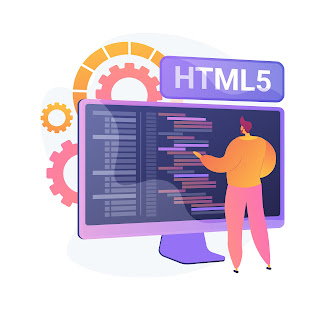Python Web Development Best Practices and Tips
Python has gained immense popularity as a powerful and versatile language for web development. With its simplicity, readability, and vast ecosystem of frameworks and libraries, Python offers developers a wide range of possibilities. However, like any programming language, there are best practices and tips that can help you build efficient, secure, and scalable web applications. In this article, we will explore some of the best practices and tips for Python web development.
Follow the DRY Principle:
The DRY (Don't Repeat Yourself) principle is crucial in web development. Avoid duplicating code and strive for reusable components. Extract common functionalities into separate modules or functions that can be easily reused across different parts of your application. This not only saves development time but also improves code maintainability and reduces the chances of introducing bugs.
Choose the Right Framework:
Each framework has its strengths and caters to different types of projects. Consider the requirements of your project and choose the framework that aligns best with your needs. Django is ideal for large, complex applications, Flask is lightweight and flexible for small to medium-sized projects, and Pyramid offers a balance between the two.
Utilize Virtual Environments:
Virtual environments allow you to isolate your project's dependencies and create an isolated development environment. This ensures that different projects handled by a professional Python development company can have their own sets of dependencies without conflicts. Use tools like virtualenv or conda to create and manage virtual environments for your Python web projects. It promotes better package management and helps maintain consistency across development and production environments, making it an essential practice for any reputable Python development company.
Practice Secure Coding:
Security is paramount in web development. Be cautious about common vulnerabilities such as cross-site scripting (XSS), SQL injection, and cross-site request forgery (CSRF). Validate and sanitize user input, utilize parameterized queries or prepared statements when dealing with databases, and implement proper authentication and authorization mechanisms.
Optimize Performance:
Performance optimization is essential for delivering a seamless user experience. Minimize database queries by utilizing caching mechanisms like Redis or Memcached. Compress static assets, such as CSS and JavaScript files, to reduce load times. Implement lazy loading for images and optimize database queries to fetch only the required data. Monitor performance using tools like New Relic or the Django Debug Toolbar to identify bottlenecks and optimize accordingly.
Use ORM for Database Interactions:
Python frameworks like Django and SQLAlchemy provide Object-Relational Mapping (ORM) libraries that abstract away the complexities of database interactions. Utilizing an ORM simplifies database operations, makes code more readable, and reduces the chances of introducing SQL injection vulnerabilities. Familiarize yourself with the ORM of your chosen framework and leverage its capabilities to handle database operations efficiently.
Write Unit Tests:
Unit testing is crucial to ensure the reliability and maintainability of your codebase. Write comprehensive unit tests that cover different aspects of your application, including edge cases and different user scenarios. Utilize frameworks like pytest or unittest to write and execute tests. Continuous integration tools like Jenkins or Travis CI can automate the testing process, providing early feedback on code quality and preventing regressions.
Document Your Code:
Clear and comprehensive documentation is vital for collaboration and maintenance. Document your code by providing comments, docstrings, and high-level explanations of how different components of your application work. Use tools like Sphinx to generate API documentation from docstrings. Well-documented code not only helps other developers understand your codebase but also makes it easier for you to revisit and update your own code in the future.
Embrace Version Control:
Version control systems like Git are essential for managing your codebase, enabling collaboration, and facilitating rollbacks if needed. Use Git to track changes, create branches for different features, and merge them back into the main codebase. Platforms like GitHub or GitLab provide additional features like issue tracking, pull requests, and code reviews, enhancing the development workflow.
Stay Updated:
Python, frameworks, libraries, and security practices evolve continuously. Stay updated with the latest trends, updates, and best practices in Python web development. Follow relevant blogs, participate in developer communities, attend conferences or webinars, and engage in continuous learning. Regularly update your dependencies to leverage the latest features, bug fixes, and security patches.
Conclusion
Adhering to best practices and implementing the tips mentioned above can significantly enhance your Python web development projects. By partnering with a professional Python web development company, you can leverage their expertise in following the DRY principle, selecting the right framework, utilizing virtual environments, prioritizing security and performance, leveraging ORM, writing unit tests, documenting code, embracing version control, and staying updated. These practices promote code reusability, maintainability, and readability, while also safeguarding against common vulnerabilities. Collaborating with a specialized Python web development company ensures that you have access to the latest industry insights and a dedicated team focused on building high-quality, scalable web applications.




Comments
Post a Comment